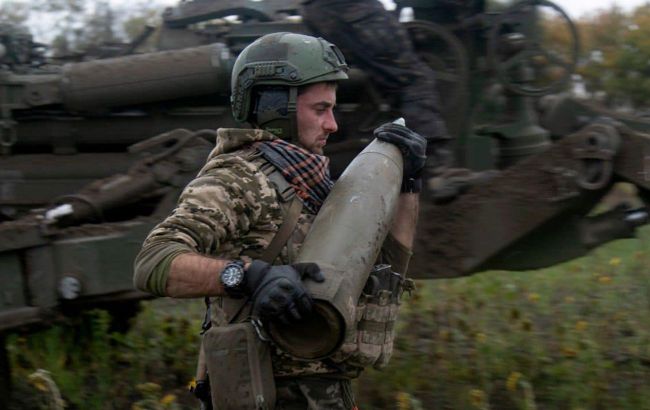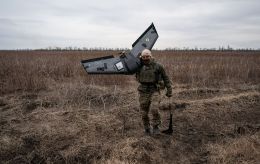Ukrainian forces fail to replicate Kursk breakthrough in Belgorod region - ISW
 Photo: the military of the Armed Forces of Ukraine could not gain a foothold in the Belgorod region (facebook.com/MinistryofDefence UA)
Photo: the military of the Armed Forces of Ukraine could not gain a foothold in the Belgorod region (facebook.com/MinistryofDefence UA)
The Armed Forces of Ukraine managed to enter the Belgorod region but were forced to withdraw due to the strong preparedness of Russian forces to repel cross-border attacks, according to the report from the Institute for the Study of War (ISW).
According to available reports from open sources and eyewitness accounts, as of August 16, Ukrainian forces no longer hold positions in the Belgorod region.
The report cited a publication by The Washington Post dated August 15, which noted that on August 11, Ukrainian forces conducted mechanized attacks in the Belgorod region near the Kolotylivka border crossing on the international border northwest of Belgorod city, advancing approximately 10 kilometers in that area.
At the same time, Russian sources reported that in recent days, the Ukrainian Armed Forces repeatedly attacked near Kolotylivka and temporarily captured the border crossing on August 15. However, Russian authorities did not confirm that Ukrainian forces advanced more than 10 kilometers from the border crossing.
The Washington Post reported that Ukrainian forces held positions in the Belgorod region while under heavy Russian airstrikes and artillery fire. On August 15, Ukrainian armored vehicles crossed the border to evacuate remaining personnel from the area.
As of August 16, ISW has not observed any Russian statements or evidence indicating the presence of Ukrainian forces in the Belgorod region.
"Ukrainian soldiers told the Washington Post that Russian forces in Belgorod Oblast were more prepared to repel cross-border Ukrainian assaults than Russian forces in Kursk Oblast and that Russian forces had established an extensive array of "dragon's teeth" anti-tank fortifications along the border and heavily mined the area," the Institute for the Study of War (ISW) reported.
Furthermore, ISW noted that, according to Ukrainian soldiers, Russian artillery units, drone operators, and aviation immediately began attacking the Ukrainian Armed Forces when they attempted to cross the border into the Belgorod region on August 11.
"The Ukrainian soldiers' description of the Russian response suggests that the operational surprise, which Ukrainian forces achieved on August 6 when launching the incursion into Kursk Oblast, had largely dissipated by August 11 and that Russian forces in Belgorod Oblast had prepared to repel Ukrainian cross-border assaults," ISW wrote.
The report also mentioned that since the invasion began on August 6, Ukrainian forces have made further rapid advances in other sections of the border with the Kursk region. This suggests that Russian forces likely defend some border areas more effectively than others.
As a reminder, since August 6, Ukrainian forces have been conducting an offensive operation in the Kursk region. During this period, they advanced 35 kilometers, taking control of 1,150 square kilometers of the aggressor country's territory.
The Russian authorities have declared a counterterrorism operation regime in the Kursk, Belgorod, and Bryansk regions.
For more information on whether the Ukrainian Armed Forces' breakthrough in the Kursk region could expand into the Belgorod region, read RBC-Ukraine's report.

